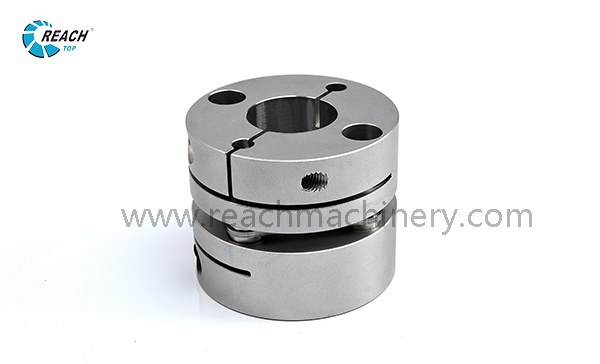Diaphragm couplings are a type of flexible coupling used to connect two shafts while compensating for misalignment and transmitting torque between them. They consist of a diaphragm or membrane made of thin metal that flexes to accommodate radial, axial, and angular misalignments between the driving and driven shafts.
When converting from a diesel motor to an electric motor, a diaphragm coupling can be used to connect the output shaft of the diesel engine to the input shaft of the electric motor. Here’s how the application of a diaphragm coupling works in this context:
- Compatibility: Before considering the diaphragm coupling, ensure that the output shaft of the diesel engine and the input shaft of the electric motor have compatible dimensions, such as shaft diameter and keyway.
- Alignment Compensation: Diesel engines and electric motors may not have the same shaft alignment for various reasons, such as differences in mounting arrangements or manufacturing tolerances. The diaphragm coupling can tolerate slight misalignments, including parallel offset, angular misalignment, and axial displacement.
- Vibration Dampening: Diesel engines produce significant vibrations and torque fluctuations, which can be transferred to the connected equipment. The diaphragm coupling helps dampen these vibrations, protecting the electric motor from excessive stress and potential damage.
- Torque Transmission: The diaphragm coupling can effectively transmit torque from the diesel engine to the electric motor. It ensures a reliable and smooth power transfer while accommodating any misalignment without compromising the overall system’s performance.
- Maintenance and Serviceability: are designed to be maintenance-free and offer long service life. This reduces the need for frequent maintenance and minimizes downtime during the conversion process.
- Space Limitations: In some cases, space constraints might be a consideration when converting from a diesel motor to an electric motor. Diaphragm couplings are compact and can be advantageous when limited space available for coupling components.
- Overload Protection: In the event of an overload or sudden shock to the system, the diaphragm coupling can act as a safety feature by slipping or flexing, protecting the connected equipment from damage.

By using a diaphragm coupling in the conversion process, the transition from a diesel motor to an electric motor becomes smoother and more efficient. It ensures that the torque and power from the diesel engine are effectively transferred to the electric motor while providing the necessary flexibility to accommodate misalignments and reduce the risk of mechanical failures.
Post time: Jul-27-2023
